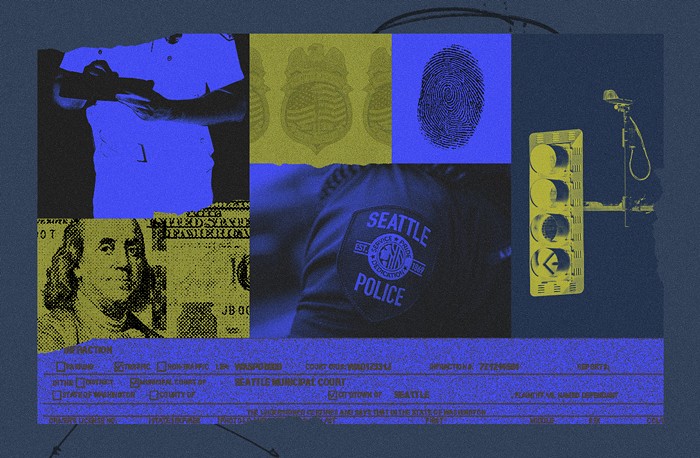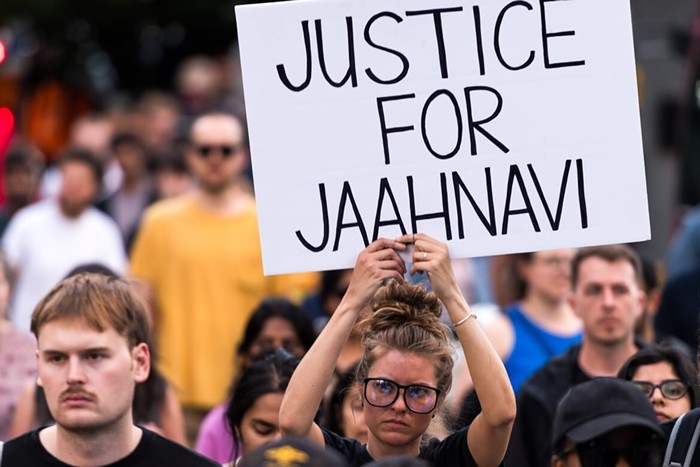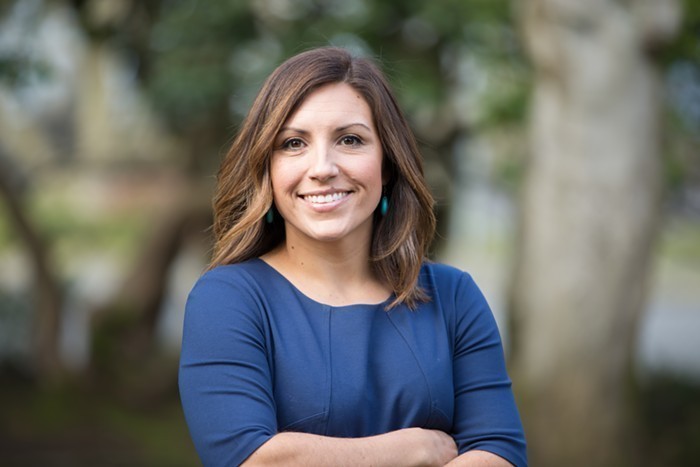
Small business owners on 23rd Avenue in the Central District are demanding a response from the city about a construction project they say threatens the very existence of their businesses. They want to know why the city won't pay them mitigation money, as it did for projects on the waterfront in 2014.
They're also wondering about something else: Why aren't there more workers of color on the project? That question is particularly important as the work tears up a stretch of street in the Central District, a neighborhood Seattle King County NAACP President Gerald Hankerson described to the city council this morning as "ground zero of gentrification."
The city says the construction project employs a diverse workforce, but anecdotes from people who live and work in the area tell a different story.
"We've been watching for almost a year now," Hankerson told The Stranger in an interview yesterday, "and along the way we've talked about how we don't see no people of color."
Earl Lancaster, the owner of Earl's Cuts and Styles, has noticed this too.
Over the last year and a half, as Lancaster cut hair inside his small, 24-year old barbershop at 23rd and Union, he watched a new apartment building rise across the street. Like so many of the new apartment buildings in Seattle, it's gray, boxy, and six stories tall—just one more change to Lancaster’s rapidly gentrifying neighborhood. But Lancaster noticed something missing from that apartment project. He went over to talk to the head of the construction crew.
"I said, ‘I don't see a lot of African American men working here’," Lancaster remembers. "He said, ‘Yeah you're right’” and the next day, he delivered a stack of job applications Lancaster could offer his customers. Lancaster set the applications out for his customers to take. The jobs on the building across the street may have been full, but the company had other projects elsewhere in the city. Lancaster liked that response, he said. "It was immediate.”
Today, Lancaster is watching another project through the window of his shop—the $43 million 23rd Avenue overhaul—and again, he notices few people of color doing the work. Multiple business owners along 23rd Avenue echo this sentiment: They say they rarely see non-white construction workers on the 23rd Avenue project. On a city project of this scale, they should be seeing people of color at work.
Last year, Seattle passed a law known as "priority hire." That legislation said that on city-funded construction projects costing $5 million or more, 20 percent of the work must be done by people from "economically distressed" zip codes. Roundabout as it seems, that was the most direct legal path the city could take to trying to compel construction companies to hire more people from inside the city and more people of color. (Among the state laws at play here, a voter-approved initiative in the '90s prohibited government agencies in Washington from practicing affirmative action.)
"When this city builds construction projects, there are public benefits," Mayor Ed Murray said when he signed the bill into law, "and from that rebuilt road or renovated community center, all of the public should benefit."
But there's a loophole: If a project receives federal grant money—like the construction on 23rd Avenue has—the city has to ask the feds for permission to impose extra rules, like priority hire, said Julie Moore, a spokesperson for the city's Office of Finance and Administrative Services. Moore said the city asked for that permission but it was denied by federal agencies. (I'm still waiting for documentation of that back-and-forth.) So, priority hire is not being applied to the project on 23rd Avenue.
Jill Mangaliman, executive director of the environmental justice organization Got Green, which advocated for the priority hire law, calls that a "missed opportunity."
The project on 23rd "is paving way for gentrification,” Mangaliman told The Stranger. "How do we ensure something is coming back to the people living there, to the communities trying to hold on and stay in the Central District?"
While priority hire requirements aren't being imposed, the city claims contractors working on the project are following them voluntarily. "That expectation was set from the beginning," Moore said. According to the FAS Department, about 32 percent of the hours worked on the 23rd Avenue project have been performed by people of color and 22 percent of the workers on the project are from "distressed zip codes." Moore said both of those figures are higher than on "similar projects" in the past.
The city's numbers look good, but they don't square with what those in the neighborhood claim they're seeing. Can the city back up its numbers? From which distressed zip codes are people being hired? If people of color are indeed being hired on this project, what types of jobs are they being given? I'm still waiting on answers to those questions. I've requested more documentation from both the city and the main contractor on the project, Gary Merlino Construction. I'll report when I hear back.


















